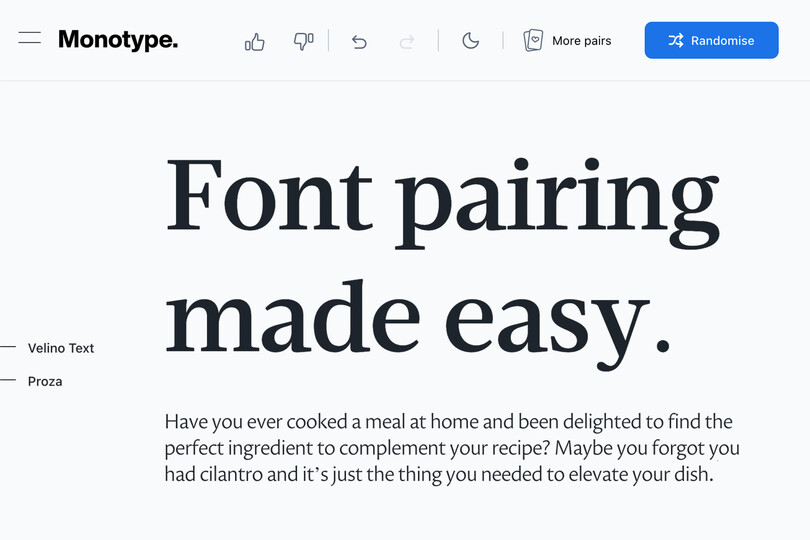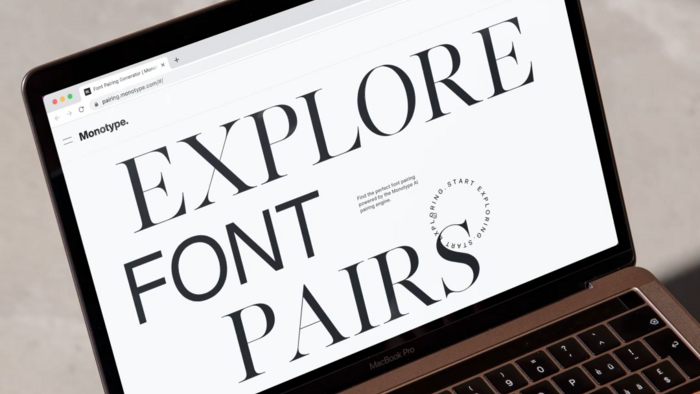Putting AI to work: The magic of typeface pairing

Type design
Digital branding
Creative matters
Typography
Monotype Labs
Font pairing is a subjective practice with infinite possibilities. But what if you had an AI tool that considered your expertise and emotions as your personal assistant?
Have you ever cooked a meal at home and been delighted to find the perfect ingredient to complement your recipe?
Maybe you forgot you had cilantro, crushed peanuts, or lemon juice, and it’s just the thing you needed to elevate your dish. Or perhaps, you were getting dressed for the day. You selected your favorite pair of denim but weren’t sure which shirt would match. You considered your mood and then the destination. You finally decided on a warm, seasonal sweater. In either scenario, you created a fresh and distinctive flavor, an enhanced experience. And as a result, a sensation of ease and satisfaction washed over you.
This is what finding the perfect font pairing feels like.
Terrance Weinzierl, Creative Type Director
The Monotype AI pairing engine.

The power behind font pairing.
How fonts are paired: from harmony to contrast.
Monotype’s Font Pairing AI.
Terrance Weinzierl, Creative Type Director